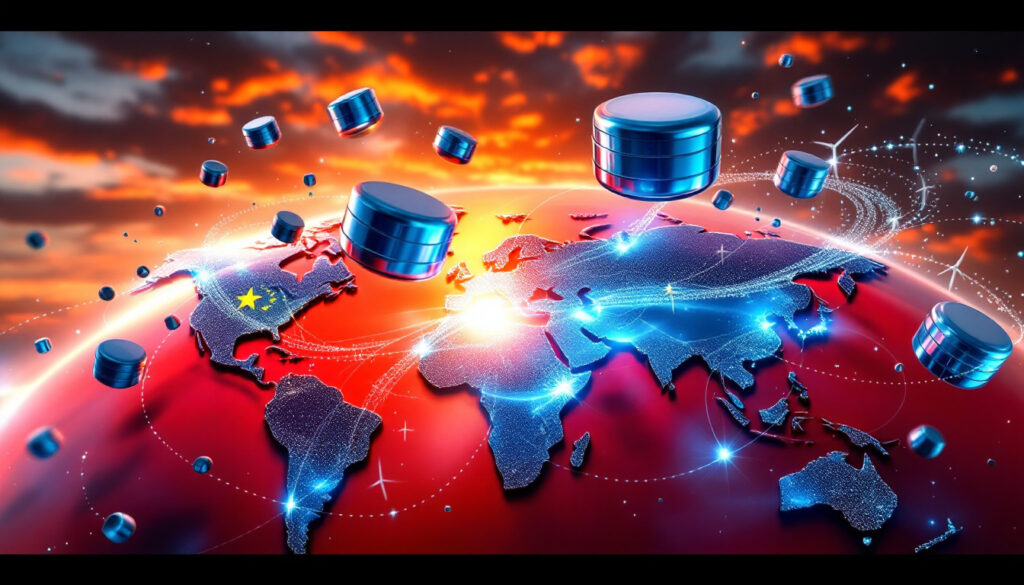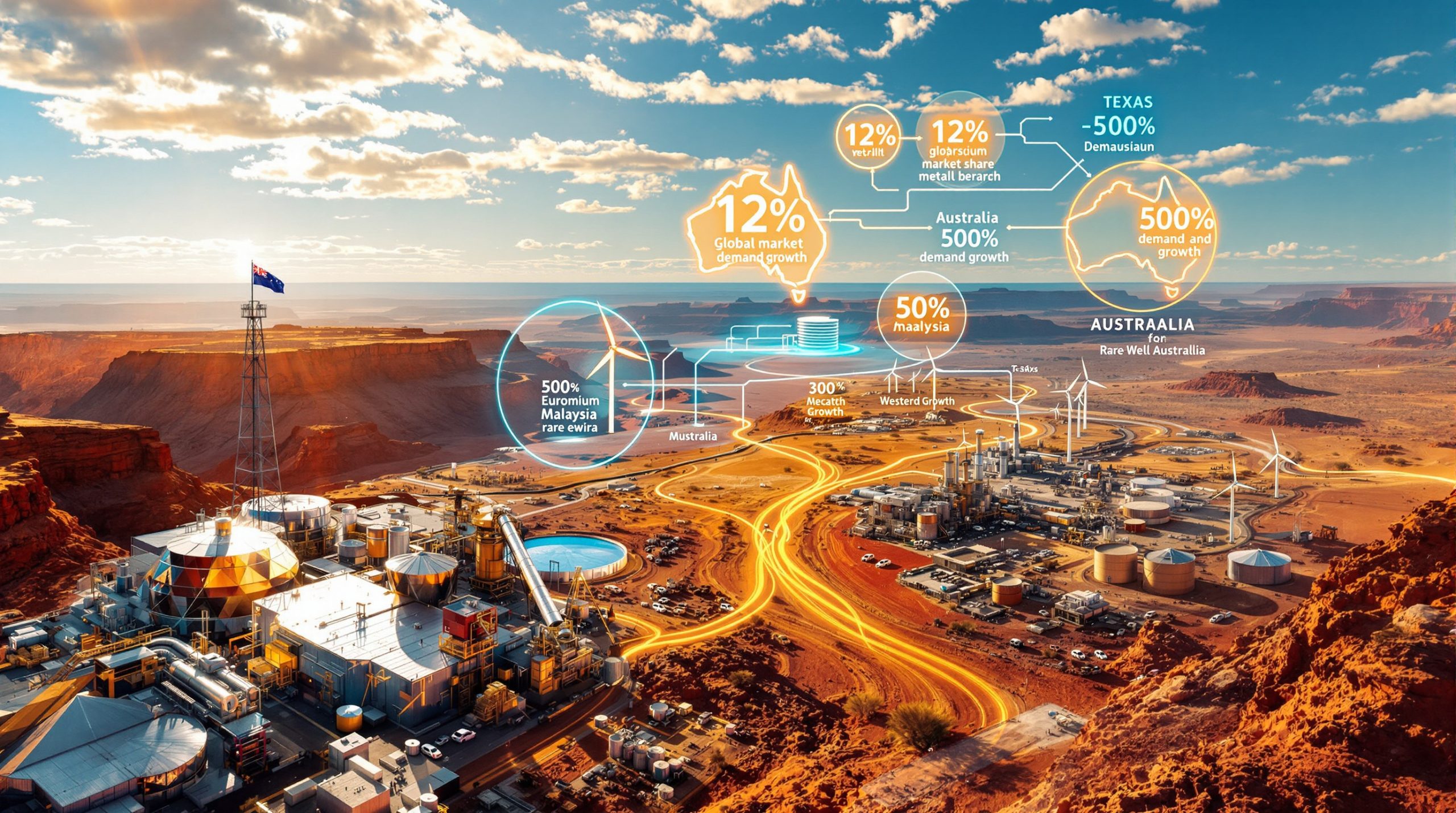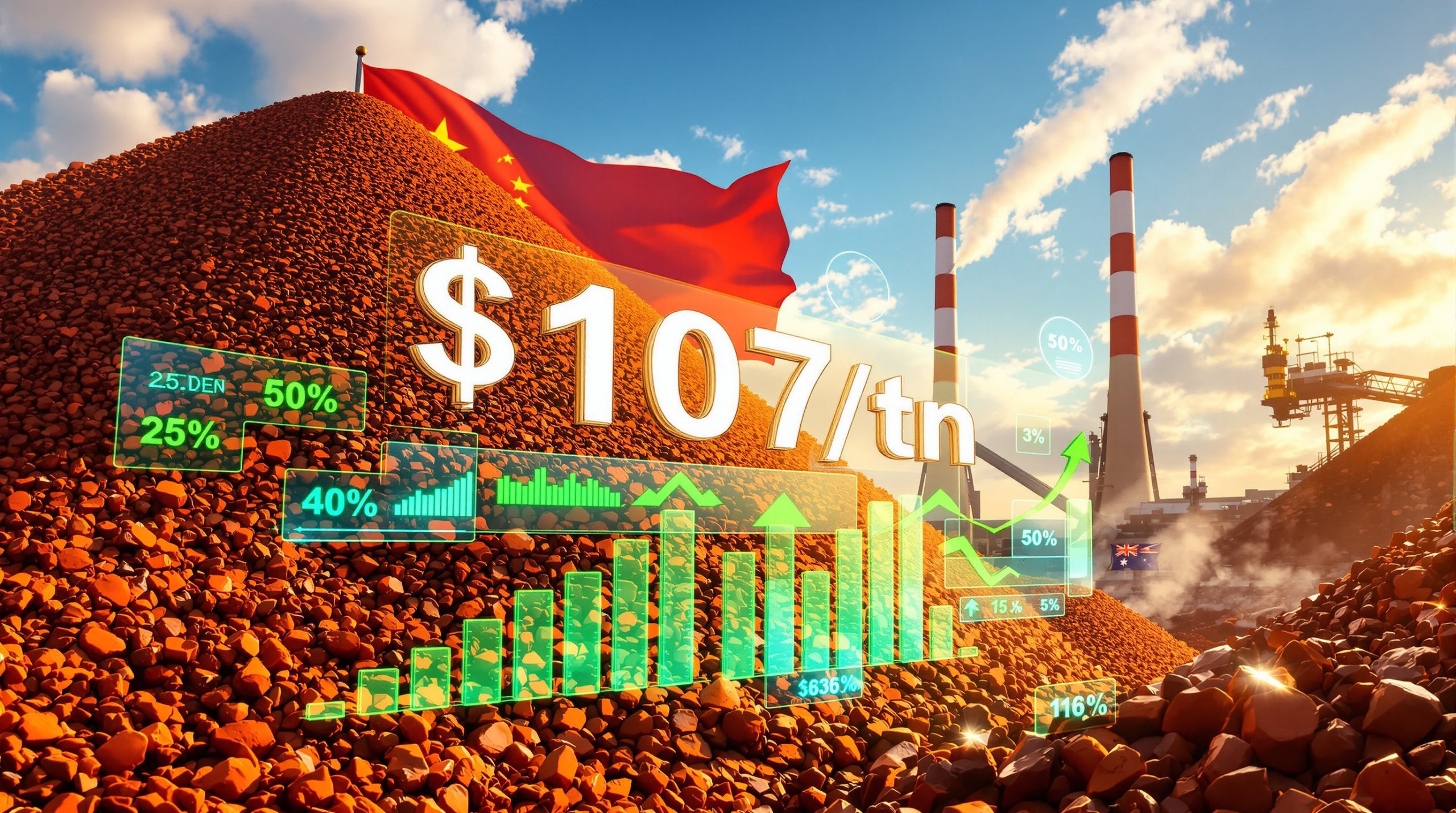What Are Rare Earth Magnets and Why Do They Matter?
Critical Components for Modern Technology
Rare earth magnets represent one of the most critical components in modern technology infrastructure, containing specialized compounds of neodymium, dysprosium, and other heavy rare earth elements. These aren't ordinary magnets – they deliver exceptional magnetic strength in compact form factors, making them irreplaceable in high-performance applications. The manufacturing process involves precision metallurgy techniques that few countries have mastered, with China controlling approximately 90% of global production capacity.
The strategic significance of these magnets stems from their essential role in electric vehicle motors, where they enable the power-to-weight ratios necessary for efficient transportation. A typical EV contains 1-2kg of rare earth materials, with premium models using up to 5kg in their advanced drivetrain systems. Similarly, renewable energy generation depends heavily on these components, with a single industrial wind turbine requiring up to 600kg of rare earth elements in its permanent magnet generator.
China's dominance in this sector isn't accidental but the result of decades of strategic investment in both mining operations and processing facilities. The country's Jiangxi province contains some of the world's richest deposits of heavy rare earths, particularly the ion-adsorption clay formations that yield dysprosium and terbium – elements that command premium prices due to their scarcity and technical applications.
Strategic Importance in Key Industries
The defense sector's reliance on rare earth magnets cannot be overstated. Modern missile guidance systems, radar equipment, and communication devices all utilize these components. According to industry analysts, a single F-35 fighter jet contains approximately 417kg of rare earth materials across various systems. The semiconductor manufacturing process likewise depends on precision equipment utilizing these specialized magnets for nanometer-scale positioning systems.
While rare earth magnets represent less than 0.1% of China's total export value, their strategic importance vastly outweighs their economic footprint. The Chinese government has designated rare earth elements as "strategic minerals" since 2012, granting them special status in trade negotiations and domestic industrial policy. This classification allows authorities to implement critical mineral export restrictions beyond standard trade regulations, creating a powerful geopolitical leverage point.
The growing adoption of robotics, drones, and autonomous systems across industrial and military applications has further intensified demand, with market analysts projecting a 16% compound annual growth rate for rare earth magnets through 2030. This accelerating demand curve has only heightened concerns about supply chain vulnerabilities.
Why Has China Suspended Rare Earth Exports?
Trade War Escalation
China suspends rare earth magnet exports as a calculated escalation in the ongoing trade tensions with the United States. Following Trump's trade policies that implemented 25% tariffs on $300 billion worth of Chinese imports in March 2025, Beijing needed a response that would maximize leverage while minimizing self-harm. Rare earth exports provided the perfect vehicle – strategically vital to U.S. industries but representing a small fraction of China's overall export economy.
The suspension follows a pattern established earlier when China announced export controls on six heavy rare earth metals used in magnet production. While initially described as "quality control measures," industry insiders recognized them as a targeted response to U.S. trade policy. The regulatory framework being developed appears designed specifically to create pressure points in American defense and technology supply chains.
Dr. Zhang Wei, a rare earth policy analyst at Beijing University, notes that "China has learned from previous trade conflicts that broad-based tariffs often cause mutual damage. By targeting narrow but critical supply chains, Beijing can create asymmetric pressure points." This strategic approach aims to bring the U.S. back to the negotiation table from a position of Chinese strength.
New Regulatory Framework Development
Chinese customs officials have halted shipments at major ports including Shanghai, Guangzhou, and Tianjin while the government finalizes a comprehensive new export control framework. Sources within the Ministry of Commerce indicate the review process will take a minimum of 45 days, potentially extending to several months depending on trade negotiation progress.
The developing regulations include a sophisticated classification system that categorizes rare earth products based on their strategic value and downstream applications. Industry sources suggest materials destined for military applications will face the strictest controls, followed by those used in semiconductor manufacturing and electric vehicle production. Consumer electronics components may receive more lenient treatment.
Implementation has varied significantly across different Chinese ports, creating additional uncertainty for global manufacturers. "Some shipments with trace rare earth content have been allowed through Shanghai after extensive documentation review, while Guangzhou port has implemented a near-complete halt," explains Jennifer Chang, supply chain director at a major electronics manufacturer. This inconsistent enforcement appears deliberate, maximizing market confusion and compliance costs.
What Materials Are Affected by the Export Controls?
Key Rare Earth Elements Under Restriction
The export controls specifically target six heavy rare earth metals that form the backbone of high-performance magnet production: dysprosium, terbium, europium, gadolinium, holmium, and lutetium. These elements impart crucial properties like temperature resistance and coercivity that enable magnets to maintain performance under extreme conditions.
Dysprosium oxide has experienced the most dramatic price impact, surging to approximately $204/kg in Shanghai markets – a 27% increase since controls were announced. The element is particularly crucial for EV motors that must operate at high temperatures without demagnetization. Outside China, prices have climbed even higher, reaching $275/kg in Japanese and European markets due to supply uncertainty and panic buying.
Terbium, another critical element for high-temperature applications, has seen spot prices increase to $1,230/kg, approaching its all-time high from 2011. Industry experts note that terbium's limited substitutability makes it particularly vulnerable to supply disruptions, as alternative technologies typically suffer from significant performance penalties.
Inconsistent Enforcement at Chinese Ports
The implementation of export controls has revealed significant variations across different Chinese ports, creating a complex compliance landscape for international buyers. In Shanghai, customs officials have allowed magnets containing less than 0.5% heavy rare earths to be exported after enhanced documentation procedures. Conversely, Guangzhou port authorities have required extensive laboratory testing to confirm exact elemental compositions, creating weeks-long delays.
This patchwork enforcement appears to be a deliberate strategy to maximize uncertainty while maintaining plausible deniability about a complete export ban. "Chinese officials are carefully calibrating restrictions to create maximum pressure while staying within WTO compliance guidelines," notes Dr. Michael Richardson, a trade policy analyst at Stanford University. "By varying enforcement between ports, they create a compliance nightmare without technically violating trade agreements."
Some manufacturers report being asked to provide detailed information about end-users and applications – information not previously required for export clearance. This suggests China is developing more sophisticated controls that target specific downstream industries rather than implementing blanket bans that could trigger WTO challenges.
How Will This Impact Global Supply Chains?
Immediate Market Disruptions
The U.S. recently announced tariff exemptions for many consumer electronics to mitigate inflation concerns, but rare earth components remain critically affected by both American tariffs and Chinese export controls. This regulatory double-bind has created severe supply chain pressures for companies caught between conflicting policy objectives.
Industry leaders warn that the 45+ day delay in processing could rapidly deplete global stockpiles, particularly for specialized grades used in military and aerospace applications. Unlike commodity materials, rare earth magnets are typically produced to precise specifications for particular applications, limiting the fungibility of existing inventories.
A stark contrast exists between Japanese and American inventory practices. Japanese firms, scarred by China's 2010 rare earth embargo, maintain robust stockpiles averaging 12-18 months of projected needs. In contrast, American companies have generally optimized for just-in-time supply chains, with most maintaining only 30-60 days of inventory. This divergence in preparedness could create significant competitive advantages for Japanese manufacturers as the crisis unfolds.
Long-term Strategic Implications
Beyond immediate disruptions, the export controls signal a fundamental shift in the rare earth supply chain. Companies across the U.S., Japan, and Germany now face the prospect of permanently higher costs and structural supply constraints. Defense contractors appear particularly vulnerable, with Chinese officials signaling that military applications may face continued restrictions regardless of broader trade negotiations.
"The critical inputs for our future technology supply chains are effectively shut down," warns James Litinsky, CEO of MP Materials, the only rare earth mine and processing facility in the United States. "This isn't just about current production – it's about future innovation capacity and national security."
The crisis has accelerated efforts to develop alternative supply sources, with particular attention to Australia's Mount Weld and Nolans projects, Vietnam's Lai Chau deposits, and Canada's Strange Lake development. However, industry experts caution that bringing new mines online requires 5-10 years of development time, and processing facilities face even longer timelines due to environmental permitting and technical challenges.
Who Controls the Rare Earth Supply Chain?
China's Dominant Position
China's control over the rare earth supply chain stems from both geological advantages and strategic investments in processing technology. The country's Jiangxi province contains the world's richest known deposits of ion-adsorption clays, uniquely suited for heavy rare earth extraction. These deposits are particularly valuable because they can be processed using relatively simple leaching techniques rather than the energy-intensive methods required for hard-rock mining.
Ganzhou city has emerged as the epicenter of global magnet production, housing over 400 specialized factories ranging from small workshops to industrial giants like JL Mag Rare-Earth. This leading producer supplies materials to Tesla, BYD, and numerous other global manufacturers. The concentration of expertise in this region represents decades of specialized knowledge development that cannot be easily replicated elsewhere.
The Chinese government has systematically consolidated its rare earth industry over the past decade, reducing the number of licensed producers from over 200 to approximately 20. This consolidation has improved environmental compliance while enhancing Beijing's ability to control production volumes and enforce export regulations.
Limited Alternative Sources
MP Materials operates Mountain Pass, the only active rare earth mine in the United States, but currently ships its concentrate to China for separation and processing – highlighting the complex interdependencies even in "domestic" supply chains. The company is investing $700 million to develop onshore processing capabilities, but completion remains years away.
"Critical inputs for our future supply chain are shut down while we work to establish domestic production," explains James Litinsky. This vulnerability exists despite Mountain Pass containing one of the world's richest deposits of light rare earths. However, the site lacks the heavy rare earth elements most critical for advanced magnet production, limiting its strategic value.
Australian company Lynas Rare Earths operates the largest non-Chinese rare earth processing facility in Malaysia, but its capacity represents less than 10% of global demand. The company faces ongoing regulatory challenges related to waste management and has struggled to achieve consistent profitability despite substantial government support.
Daniel Pickard, chairman of the U.S. critical minerals advisory committee, confirms the potential "severe effects" on American industries, noting that "we've known about this vulnerability for over a decade but have made insufficient progress in diversifying supply." The current crisis may finally catalyze the investments needed to establish genuine supply chain resilience.
What Are the Potential Responses to China's Export Controls?
Stockpiling Strategies
The Trump administration is reportedly planning an aggressive stockpiling initiative focused on deep-sea minerals to counter China's resource dominance. The plan would allocate $1.2 billion for acquiring strategic materials from international markets while simultaneously accelerating development of domestic resources. Critics question whether purchasing from existing suppliers might simply drive prices higher without addressing fundamental critical mineral shortages.
Companies are reevaluating inventory practices, with many increasing target stockpiles from 30-60 days to 90-180 days despite the negative cash flow implications. This shift represents a fundamental recalibration of the balance between efficiency and resilience in supply chain management. The semiconductor industry, having faced similar challenges with specialized materials, has emerged as a model for this transition.
Mining companies are accelerating exploration for non-Chinese sources, with particular focus on Vietnam, Brazil, and Greenland. These efforts face significant challenges including technical complexity, environmental concerns, and financing constraints. Development timelines typically span 7-10 years from discovery to production, limiting their relevance to the current crisis.
International Cooperation
Affected nations are exploring unprecedented cooperation frameworks to address their shared vulnerability. The U.S., Japan, and Germany have initiated preliminary discussions about a "Rare Earth Alliance" that would coordinate stockpiling, research, and development efforts while providing financing guarantees for new mining projects outside China.
Japan's model of government-industry partnership offers valuable lessons, having successfully reduced Chinese dependence since the 2010 embargo through strategic investments in recycling technology and alternative suppliers. The Japanese government's JOGMEC (Japan Oil, Gas and Metals National Corporation) has established equity positions in rare earth projects across Australia, Vietnam, and Kazakhstan, creating a diversified supply portfolio.
Development of new mining and processing capabilities will require substantial capital investment, estimated at $30-50 billion globally over the next decade. This scale exceeds what individual companies can justify, suggesting a necessary role for government financing, loan guarantees, and tax incentives to overcome market failures in this strategically vital sector.
FAQ: Rare Earth Export Controls
What exactly are rare earth magnets?
Rare earth magnets are specialty permanent magnets manufactured using alloys containing rare earth elements, primarily neodymium, praseodymium, dysprosium, and terbium. Unlike conventional ferrite magnets, rare earth variants (specifically neodymium-iron-boron and samarium-cobalt types) offer exceptional magnetic strength-to-weight ratios, allowing for miniaturization of motors and generators. A typical neodymium magnet generates magnetic fields approximately ten times stronger than an equivalent ferrite magnet, enabling the efficiency gains critical for electric vehicles and wind turbines.
How long could the export suspension last?
The initial regulatory review is expected to take a minimum of 45 days, but industry experts anticipate disruptions lasting significantly longer. Chinese officials have indicated that the framework being developed represents a permanent restructuring of export controls rather than a temporary measure. Companies meeting certain criteria may regain access after the initial review period, but others – particularly those supplying U.S. military contractors – could face indefinite restrictions under China's "unreliable entity list" provisions.
Will this affect consumer electronics prices?
While the U.S. has announced tariff exemptions for many consumer electronics to cushion inflation impacts, products containing rare earth components will likely experience price increases as manufacturers absorb higher input costs. The magnitude will vary significantly by product category – smartphones might see minimal impact (estimated 1-2% cost increase) due to the small quantities used, while electric vehicles could face more substantial effects (3-7% increase) given their heavier reliance on rare earth magnets for motors and sensors. The timing of price impacts will depend on existing inventory levels, with most analysts expecting gradual increases over 6-12 months as current stocks deplete.
What countries are most affected by these export controls?
The export controls specifically target the United States, Japan, and Germany – all manufacturing powerhouses with significant rare earth requirements but limited domestic production capacity. Japan appears best positioned to weather the disruption due to its strategic stockpiles and diversified sourcing established after China's 2010 embargo. The United States faces particularly acute challenges in the defense sector, where specialized materials qualification requirements limit substitution options. German automotive manufacturers represent another vulnerability point, as their aggressive electrification strategies have created substantial rare earth demand for motor production. Investors should consider these dynamics when developing geopolitical investor strategies and seeking global commodity insights.
Searching for the Next Breakthrough Mineral Discovery?
Discovery Alert's proprietary Discovery IQ model instantly notifies investors of significant ASX mineral discoveries, including rare earth findings that could transform the electronics and EV industries. Visit the dedicated discoveries page to understand how major mineral discoveries can lead to exceptional market returns and begin your 30-day free trial today.




